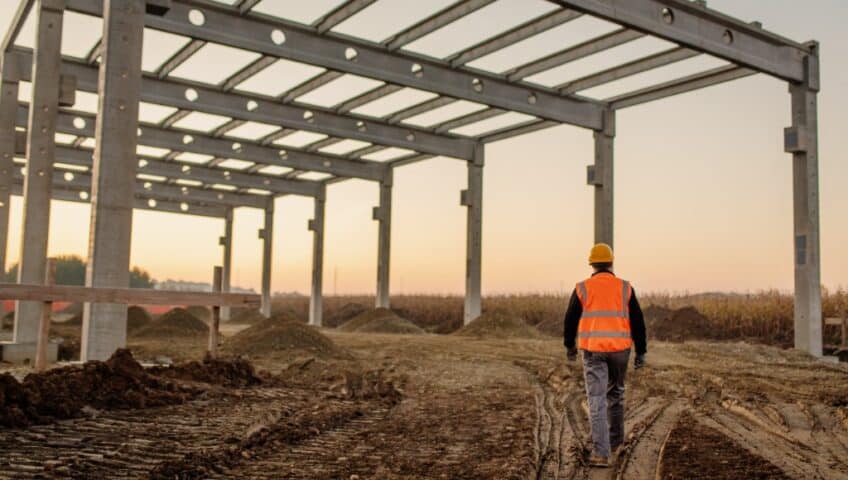
What Is Soil Stabilization?
The foundation is one of the most important aspects of many types of structure, whether you’re talking about a sidewalk, a parking lot, a highway, a small home, or a massive building. When laying asphalt or concrete for a road or parking lot, the soil acts as the foundation. When the soil is strong and stable, the pavement stands up better to the elements.
Civil engineers use a process called soil stabilization to enhance the properties of soil to make it more effective as a base for your pavement. If the soil where you want to place your pavement is swampy, it could be too wet to provide a stable foundation.
Chemicals can be added to the soil to keep it dry and stable. The goal is to keep the soil from shifting when the elements disturb the surface. Soil stabilization can also prevent the shrink and swell properties of soil, which can impact the lifespan of your pavement.
What Are the Different Types of Soils Used for Foundation?
There are four main types of soil: sand, silt, clay, and loam. The organic content of soil is the biggest determination of how effective it will be as a foundation. You can tell how much organic content a soil has by observing how well organic material grows in the soil. The higher the organic content, the more the soil will change shape when wet, making it ineffective as a foundation for your pavement.
Sand
You’ll notice that there are very few plants growing in the sand if you visit a beach or a desert. Sand does not have the necessary nutrients that most plants need to grow. This makes sand a good foundation for a parking lot because it won’t change shape when wet. However, it may need to be compacted before laying asphalt or concrete to create a stronger surface. Sand particles are the largest type of soil particles.
Silt
Silt particles are smaller and finer than sand. When wet, silt feels like flour. Many agricultural settings prefer silt, which is made from eroded rock. Silt can be quite dense without bonding together, so it does have good air circulation and water retention qualities. Farmers may love silt, but construction workers find it difficult to work with. It moves when wet and is difficult to compact.
Clay
Clay particles are very small and often confused with silt. A clay soil becomes almost plastic when wet, which makes the soil’s shape change. The asphalt or concrete on top of the soil will also change shape or contract and expand, depending on the temperature. It is better to remove clay before laying pavement.
Loam
Loam is a mix of silt, clay, and sand. It’s often designated by a specific soil type followed by the word “loam.” For example, clay loam contains more clay than silt and sand. Sandy loam has more sand than the other two. Before laying paving, you would want to test the loam to determine the particle size and organic content to find the most effective soil stabilization method.
What Are the Methods of Soil Stabilization?
Knowing the type of soil you’re working with gives you the best chances of finding the correct stabilization method.
- Mechanical Stabilization – With this type of soil stabilization, you mix two or more soils or add aggregate to the soil mixture so that the material is well-graded and compact to maintain its shape.
- Chemical Stabilization – Polymers or resins are added to the soil to change its chemical properties. Lime, fly ash, and cement can help stabilize soil to create a better foundation.
- Biological Stabilization – A strong root system from trees, bushes, or plants prevents erosion. While this type of soil stabilization may not be appropriate for parking lots or roads, there is a mechanical alternative known as geotextiles, which are materials applied to the soil to prevent erosion, much like a system of tree roots would.
Why Is Soil Stabilization Important?
Soil stabilization offers many benefits; the key benefit is making your structure longer because the foundation is stronger. Soil stabilization can improve the durability of your pavement because it won’t be left to the whim of the environment.
Erosion won’t damage the pavement as quickly when the soil beneath it is strong. The freeze-thaw cycle won’t impact the pavement as much as it would if the soil were left alone. Using soil stabilization makes sub-optimal sites more effective for construction projects.
How Do You Choose the Correct Method?
The type of soil stabilization method that is best suited for your project will depend on several factors, including the type of soil available, the nature of the project, your budget, and environmental issues. An expert pavement contractor can help you determine which one is best.
Each project will have different requirements; there isn’t a one-size-fits-all approach. A parking lot may need a stronger foundation than a sidewalk because of the weight of the traffic it will receive. There are many methods and chemicals that can get the job done and make your foundation last longer.
Work with an Experienced Contractor in Wichita, KS
South Central Sealing & Paving has over 30 years of experience in asphalt and concrete paving. We understand the soil in the Midwest and can determine the best way to stabilize the foundation for your project. Our technicians are your neighbors and want to make sure that your parking lots, sidewalks, and driveways present a great first impression to your customers.
We are committed to providing high-quality materials and service for 100% customer satisfaction. Our professionals are trained and experienced in the latest technologies and materials so that you get a final product that looks great and holds up well for your business. Give us a call at (316) 613-0192 or email us at astephenson@scsealing.com if you would like to get started on your next project!


